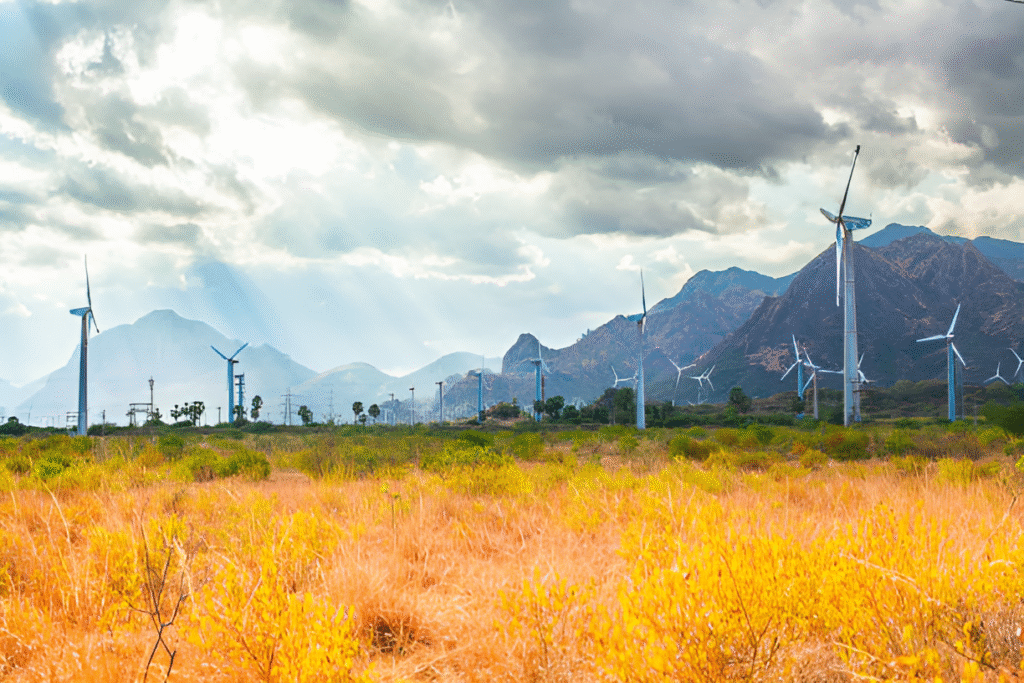Ahmedabad, Gujarat — Torrent Power, a major player in India’s power sector, has made a breakthrough in renewable energy by emerging as the successful bidder for a 300 MW wind power project under Wind Tranche-XVIII by the Solar Energy Corporation of India (SECI).
The project worth Rs 2,650 crore is expected to be commissioned within 24 months with a tariff of Rs 3.97 per unit and a Power Purchase Agreement (PPA) India. With this, Torrent Power’s total renewable energy capacity under development has increased to 3.3 GW-P.
Torrent Green Secures 300 MW Wind Project
A major win for Torrent Power’s Renewables Ambitions.
Torrent Power’s strategic investment underscores its long-term commitment to sustainability. Already a dominant force in power generation, transmission and distribution, the company’s aggressive foray into clean energy underscores its vision to lead India’s energy transformation.
According to the announcement, the project will further strengthen it’s wind energy footprint and is in line with India’s national target of 500GW of renewable energy expansion. It will add significant value to Torrent group energy portfolio at a time when the market is actively rewarding the clean energy transition.
SECI Wind Energy Power Details: What We Know?
Tendering Authority: SECI (Solar Energy Corporation of India) renewable tenders
Successful Bidder: Torrent Green Energy Pvt Ltd
Capacity: 300 MW
Tariff: ₹3.97 per unit
Date Commissioned: 24 months after PPA signed
Type: Onshore wind power India
Status: Under Construction
Development Status: Awarded – In Progress
Investment Size: ₹2,650 crore wind project
State/Country: India
Project Significance
There are several reasons why this project is important:
Why 300 MW Wind Project Matters For India’s Green Future :
It’s targeting the installation of 500 GW of non-fossil fuel-based capacity by 2030, and projects like this are the very DNA of how this will be achieved. When operational, the Torrent-SECI wind project alone will save a substantial amount of CO₂ emissions.
Torrent Power’s Growth in Renewable energy investments Portfolio Up till date, Torrent Power has developed more than 2400 MWp since the onset of its journey in this domain.
With this win, Torrent Power’s renewable pipeline swells to 3.3 GWp, established as a significant contender in the Indian clean energy evolution.
Wind projects like this are cutting India’s reliance on imported fossil fuels, strengthening energy security, and contributing to India’s transition to a low-carbon economy.
Economic & Industrial Impact
The ₹2,650 crore investment will create local employment, infrastructural growth and boost domestic WTM (wind turbine manufacturers) and EPC (engineering, procurement and construction) business.
Investor Confidence and Market Signal
The successful bid of Torrent Power demonstrates investors’ clear appetite for renewables and marks a promising portfolio pivot for the company where ESG-focused investors are concerned.
What does this mean for the market
The announcement has put Torrent Power shares in the spotlight with investors expecting positive stock movements. The large-scale investment and predictable revenue from the SECI-backed PPA will position the company for both financial stability and long-term growth in the renewable sector, which is a development in India’s drive for a green economy and Torrent Power will quickly emerge as one of the clean energy giants shaping the country’s future.
Torrent Green Powers Gujrat
The fact that Gujarat has become the capital of wind energy has been no coincidence. One of the contributing factors behind this growth has been the well-oiled (literally and figuratively) support from industry bigwigs such as the Torrent Group, who are aggressively looking to both enlarge and diversify their clean energy basket. Through its arm Torrent Green Energy Pvt Ltd, the company has recently bagged a 300 MW wind power project in Gujarat from the Solar Energy Corporation of India (SECI) under the tranche IX of SECI’s wind power projects. At stake with this SECI wind power project in Gujarat is a tariff of ₹3.97 per unit and a ₹2,650-crore investment in investment — a clear message on the economies of scale, but also the commitment to sustainability.
In January 2022, India holds the 4th largest wind power capacity in the world and largest in Asia with an installed capacity of 40GW. In Vindhyas, Tamil Nadu and Gujarat are the leaders among Indian states by capacitated with holding 25% and 22% of the capacity. The central government may have pegged ambitious targets of 60 MW by 2022 and 140 MW by 2030, but ground reality’s been slow. India’s theoretical wind energy potential is 302 GW at a height of 100 meters, and even greater – 695 GW – at a height of 120 meters, according to the National Institute of Wind Energy (NIWE). But to reach that 2030 goal, India will have to be installing more than 10 GW of wind capacity a year, a level it has only ever reached fleetingly (installations scraped past the 5 GW mark only once, in 2016–17, and most other years would have come in at under 2 GW).
What makes Gujarat different from other coastal areas such as Kutch and Saurashtra, however, is not just the windiness, but also the state’s willingness to host large renewable projects, tied into pre-cleared land, streamlined per missioning, and dedicated transmission. The creation of wind-solar hybrid energy parks in Gujarat also reflects the state’s mode to derive optimal benefits from its available land resources to provide continuous and dependable green power. As a result, Gujarat is home to developers that have won SECI-backed wind energy tenders recently, further solidifying the region’s standing as a renewable energy hub.
The Torrent Group’s wind energy investments in India are indicative of a larger trend — private players are now leading the charge in connecting the dots between India’s grand climate aspirations and on-ground capacity. As we see Torrent Power’s growth in green energy surging across the country and Gujarat in particular, the state is creating milestones in the nation’s push towards 2030 renewable energy goals.
